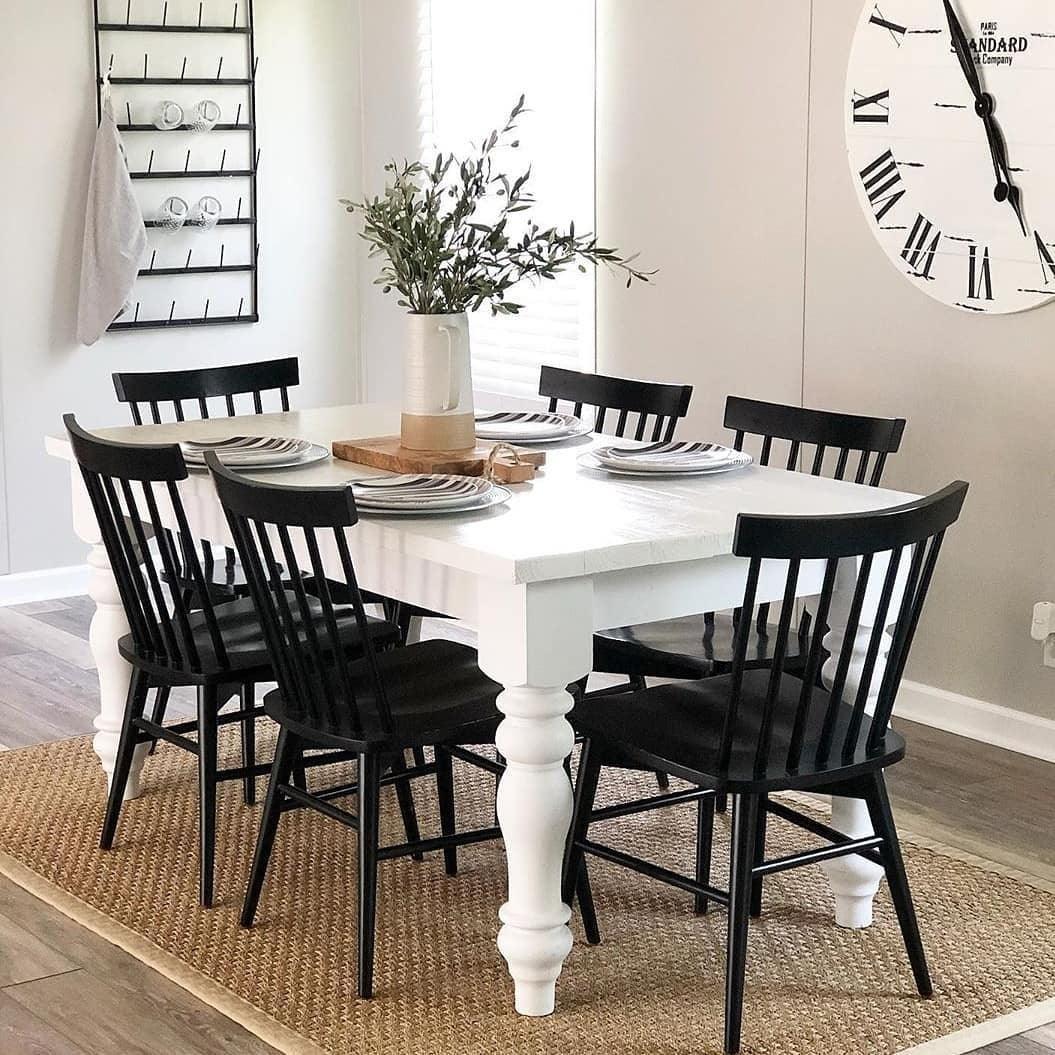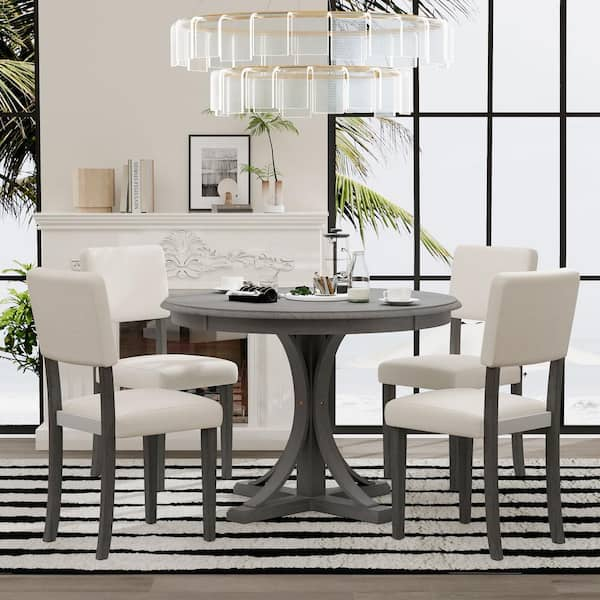Upgrade Your Furniture with Custom Dining Room Table Legs
Upgrade Your Furniture with Custom Dining Room Table Legs
Blog Article
From Standard to Modern: Find the Ideal Dining-room Table Legs for Your Design
The option of dining-room table legs plays a crucial role in defining the overall character of your room, linking the space between standard workmanship and modern-day appearances. While classic layouts such as cabriole and turned legs stimulate a sense of classic sophistication, contemporary styles like barrette and geometric options provide a chance for striking aesthetic interest. Assessing the best balance in between these styles calls for a nuanced understanding of your existing décor and personal preference. As you take into consideration these aspects, the inquiry remains: just how can you effortlessly integrate these diverse leg styles to develop a harmonious eating experience?
Understanding Table Leg Styles
The range of dining area table leg designs can substantially influence both the aesthetics and functionality of the area. Each leg design contributes one-of-a-kind visual components and useful features, satisfying varied style choices and usage needs. Recognizing these styles is important for selecting the appropriate eating table that straightens with your general interior decoration vision.
For instance, conical legs use a clean, traditional look that can boost a space's sophistication, while stand bases give stability and maximize legroom, making them perfect for smaller sized spaces. Hairpin legs, a characteristic of mid-century modern design, introduce an industrial panache, permitting an airy, open feeling. Likewise, trestle legs evoke rustic beauty, offering robust support and a feeling of timelessness.
Furthermore, the selection of materials plays a substantial duty. Wooden legs can bring warmth and texture, whereas metal options often share a sleek, contemporary ambiance. Ultimately, recognizing table leg styles is vital for creating a natural eating location that shows personal style while ensuring functionality and comfort. By thoughtfully considering these aspects, you can improve both the visual and useful appeal of your dining area.
Traditional Table Leg Options
When choosing dining space table legs, typical alternatives frequently symbolize classic beauty and workmanship. These layouts reflect a rich heritage and a dedication to quality, making them excellent for those who appreciate traditional appearances.
One of the most renowned traditional leg designs is the cabriole leg, defined by its graceful rounded shape. This layout often includes ornamental carvings and is most typically discovered in Queen Anne and Chippendale furniture. An additional prominent option is the turned leg, which flaunts a series of smooth, rounded forms that supply a classic look while preserving security.
Furthermore, the straight leg, while basic, uses a basic and tough framework that can blend perfectly with a selection of tabletop designs. For those drawn to ornate detailing, claw-and-ball feet legs stimulate a feeling of splendour and can offer as a sensational centerpiece in any dining room.
Finally, stand bases, although not strictly legs, give an alternate typical choice that permits ample legroom and can be beautifully carved. Each of these conventional leg styles contributes to the overall setting of an eating area, weding function with aesthetic allure.

Modern Table Leg Styles
Modern table leg designs offer a diverse series of styles that stress tidy lines and innovative products. These styles usually prioritize capability while working as striking prime focus within an eating room. Minimal visual appeals prevail, with legs crafted from materials such as metal, glass, and engineered wood, which add to a ventilated and contemporary feel.
One preferred design is the hairpin leg, characterized by its slim, conical framework that provides stability without overwhelming the tabletop (dining room table legs). This design is usually discovered in mid-century contemporary furniture and can effortlessly complement numerous table forms. One more my blog fad is making use of geometric forms, where legs might handle unbalanced or angular types, including aesthetic passion and a touch of virtuosity

Mixing Designs for Distinct Spaces
Often, home owners seek to develop distinct dining areas that mirror their individual style by blending various layout components. This strategy permits the incorporation of diverse appearances, leading to an unified yet distinctive atmosphere. For circumstances, coupling a rustic wooden table with streamlined, modern metal legs can develop an eye-catching comparison that elevates the area's total charm.
In addition, integrating vintage table legs with modern tabletops can stimulate a feeling of background while keeping a contemporary perceptiveness. Such mixes not only display private taste yet additionally motivate creative thinking, allowing property owners to curate a space that feels both individual and welcoming.
Shade plays a crucial function in this mixing procedure; picking table legs that match or contrast with the existing shade scheme can enhance aesthetic rate of interest. For instance, whitewashed legs can soften the daring of a dark table surface, developing a well balanced visual.
Tips for Picking the Right Legs
Choosing the right table legs is vital for attaining both functionality and aesthetic allure in your eating room. Begin by taking into consideration the general style of your room. Typical settings take advantage of legs that include intricate makings or turned layouts, while modern spaces may require streamlined, minimalist styles.
Next, evaluate the height and stability of the legs. dining room table legs. Common eating tables vary in between 28 to 30 inches in elevation, so make sure the legs match this dimension for convenience. Additionally, durable materials, such as wood or metal, can enhance stability and long life
Evaluate the leg form also-- options include directly, tapered, or pedestal styles. Straight legs supply a classic look, while conical legs can include a touch of elegance. Pedestal bases offer ample legroom and are optimal for smaller areas.
Conclusion
In recap, choosing the ideal dining area table legs requires careful consideration of both traditional and modern styles. Conventional options such as cabriole and transformed legs use timeless elegance, while contemporary styles like barrette and geometric shapes provide a contemporary touch. By integrating leg style, elevation, and product with the overall design, a natural and welcoming atmosphere can be achieved. Inevitably, the selected table legs need to mirror the preferred visual, boosting the dining experience within the room.
The variety of dining area table leg styles can click to investigate significantly affect both the looks and functionality of the room. Eventually, understanding table leg styles is important for developing a cohesive eating area that shows individual design while making sure functionality and comfort.One of the most renowned typical leg styles is the cabriole leg, defined by its graceful rounded form. Straight legs use a timeless look, while conical you can look here legs can include a touch of beauty.In recap, picking the optimal eating room table legs needs mindful factor to consider of both standard and modern designs.
Report this page